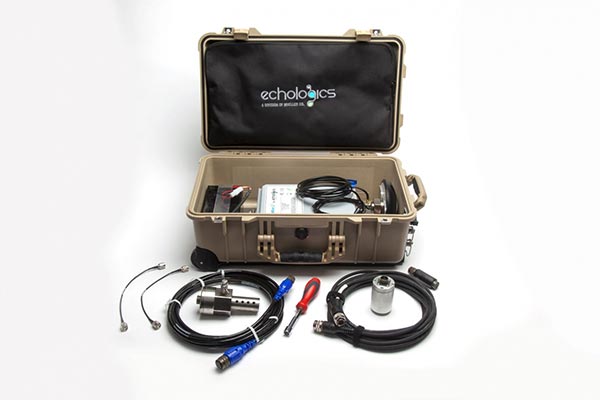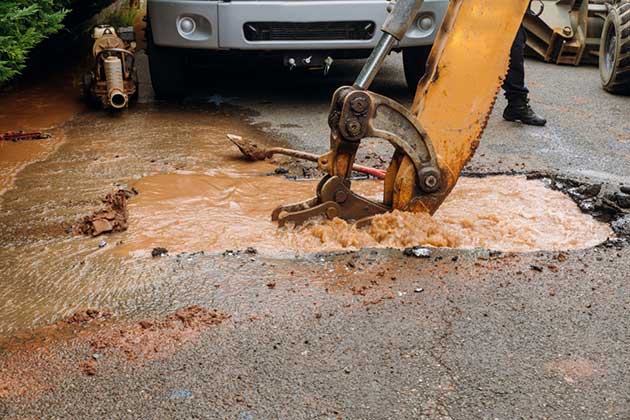Don't Underestimate the importance of leak monitoring on trunk mains
Date:
Publication:
An active leak monitoring programme can help reduce non-revenue water loss, thus improving the performance of water utilities.

As distribution mains and service connections comprise a large part of a water distribution network, it makes sense that more leaks occur in these parts of the network. This often leads to a misconception that trunk mains are not a significant contributor to the overall non-revenue water (NRW) of a network, leading to these assets being excluded from a large number of NRW programmes. However, it has been proven many times that these assets do leak and that they can be a significant contributor to the leakage levels on a water network.
So why do trunk mains so often get ignored when developing and implementing an NRW loss programme? Perception is likely the biggest reason that trunk mains get overlooked, both in terms of whether these assets are leaking, and the challenges associated with locating and fixing them. Trunk mains are often buried deeper than smaller distribution mains, so leaks are less likely to surface. For this reason, leaks on trunk mains often go undetected for several years, and in some cases decades. Undetected leaks can accumulate over time without any evidence of their presence or evolution over time, eventually leading to a catastrophic failure. With fewer leaks seen at the surface, it can appear these assets have fewer leaks and are not a significant contributor to leakage levels, but this is not the case.
As the main artery of the water distribution system, trunk mains transport huge volumes of water and are often under higher pressure to meet demand over long distances consequently, when a leak does occur, the volume of water loss is often greater than on smaller pipes. Another reason trunk mains get ignored, beyond the out of sight out of mind factor, is that leaks on these mains can be costly to find and fix. Technology enhancements in recent years enable leaks to be detected far more efficiently and with greater accuracy than in the past, enabling them to be repaired in a controlled, planned manner. By fixing leaks early, the risk of collateral damage from a catastrophic pipe burst can be avoided.

When a leak does occur on a trunk main, the volume of water loss is often greater than on smaller pipes
Leveraging Cloud-Based Analysis
Advanced acoustic leak detection technologies like the Echologics EchoShore-M system by Mueller take the guesswork out of locating leaks. This technology is based on the acoustic-based technique of cross-correlation used on distribution mains, which records leak noise signals and determines the time delay between signals reaching an array of sensors. Sound recordings are wirelessly uploaded to a secure cloud server via existing cellular networks where automated analysis is run to remove unwanted interference and pinpoint leaks. The sensors can be easily moved to multiple sites along the trunk main network and can be applied to a variety of pipe materials ranging in diameter from 400- 2,200mm.
By wirelessly transmitting data to a secure cloud-based server, data can be analysed, archived and shared with stakeholders. Points of interest are automatically created on GIS maps so water operators can visually assess the situation with a better understanding of the surrounding assets and obstacles. Data can also be exported into utility GIS software or work management systems using an API.
Non-Invasive Leak Detection Is "Reliable and Accurate"
By using hydrophones, the distance between sensors is not limited by radio range or interference, and several sensors can be used concurrently. This improves productivity for long-distance surveys and gives confidence in long-range leak detection. Having all this data uploaded to the cloud makes leak detection today much more efficient, accessible and valuable by automatically generating actionable insights.
There is much data to support that proactive leak detection on trunk mains is reliable and valuable in reducing NRW. Air Selangor, a Malaysian water operator, is a good example of this. Over the past five years, Air Selangor field staff have surveyed over 10,000km of trunk mains and identified more than 540 leaks. This amounts to a saving of 41.26 MLD. Air Selangor teams survey on average 10km a day, five days a week. As many of Air Selangor’s trunk mains have limited access points, the ability to cover longer distances using the highly sensitive hydrophones combined with the automated analysis using algorithms in a cloud-based platform has made this a successful leak detection programme for Air Selangor.
Permanent Leak Detection Gives Peace of Mind
For water utilities that want continual monitoring of trunk mains without placing personnel in the field to gather data, technologies like the Echologics EchoShoreTX by Mueller are an option. This permanent, non-invasive and non-disruptive leak detection and monitoring system can be installed at existing access points on any type of water trunk main. Through daily monitoring and notification, it delivers critical information promptly for operators, mitigating issues before they escalate and reducing response times to lessen infrastructure damage and water loss.
Continual monitoring also helps improve decision making for pipe replacement by enabling utilities to identify problem sections and prioritise replacement accordingly. The more data a utility can gather over time, the better its analytics will be, and ultimately lead to the best decision making for asset management.
Conclusion
Trunk mains leaks can accumulate and go undetected for years. As such, it is vital to recognise that trunk mains must be included in leak detection programmes. They also make up some of the oldest infrastructures in water systems and as such many have passed their design of life.
As trunk mains are costly to replace, monitoring leakage can help water operators detect and repair leaks early, potentially deferring the need to replace the pipeline. With today’s advanced leak detection technology, it is easy for any sized utility to operate its leak detection programme. By including trunk mains in this programme, utilities are bound to realise greater reductions in NRW.
Click here to read the article in Water & Wastewater Asia